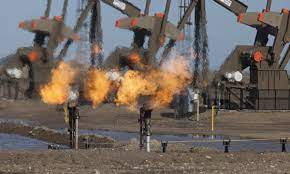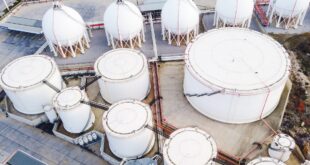China’s natural gas consumption hit an all-time high this weekend amid a cold wave that froze parts of the country.
One of the biggest gas importers in the world, China must have felt its dependency on external supply particularly acutely this weekend. But it is working to change things, boosting domestic output and focusing on unconventional resources.
Sinopec, the state-owned energy major, reported that total output from one 6-2HF well at the country’s largest shale gas field had reached 400 million cu m. It may not sound like a lot, but it is a milestone for a field with total production so far of over 34.3 billion cu m. Over half of the total comes from wells that have produced a cumulative 100 million cu m or more, China Daily reported earlier this month.
The Fuling field began commercial operation in 2014, with proven reserves estimated at close to 900 billion cu m. That’s not a lot in the context of China’s consumption—almost 260 billion cu m over the first eight months of the year—but it is certainly not small potatoes, either, especially with this year’s output representing a 182% increase on 2022 output. And China is working to develop more unconventional gas resources.
Earlier this year, Chinese media reported the first commercial flow of natural gas from a shale formation in the Sichuan province. The well operated by PetroChina in the field yielded a daily output of 738,000 cu m. Again, not a lot, but certainly a start.
Per the reports from April, the rate of production achieved at the well was a breakthrough and an indication that a “shale revolution” was coming to China. Said revolution has been slow to unfold due to geological challenges, even though China ranks tenth in the world in terms of natural gas reserves.
PetroChina’s story of developing the Cambrian shale in Sichuan illustrates these challenges. Exploration began back in 2009, meaning it has taken the company close to 15 years to begin commercial production, whereas in the U.S. shale patch, wells take months to drill and begin production.
The reason it took so long was the old stratigraphic age of the formation, meaning the layers of rock were old and harder to drill through, and the fact that the reservoir was at a deeper level than reservoirs are elsewhere.
The effort seems worth it, it appears, because, per the head of the PetroChina subsidiary drilling at the site, it could turn into a source of “trillion-cubic-meter reserves and 10-billion-cubic meter production,” according to a report in the Global Times. Earlier this year, PetroChina said annual production from the Sichuan field had topped 40 billion cu m.
What these developments show is that geological challenges do not stay challenges forever. With the right motivation, these can and are being overcome, and China certainly has the right motivation. The world’s largest energy importer as a total has been expanding domestic gas production, and it has paid off.
Last year, China’s domestic gas production stood at 220.1 billion cu m. Total consumption stood at 364.6 billion cu m. That left 87.6 billion cu m in LNG imports and 62.7 billion cu m in pipeline imports, or 41% of the total. The number is quite high, but in LNG, it is a close to 20% decline from the previous year while domestic production has been on the rise.
Chances are that domestic production will continue to rise as China seeks to boost the use of natural gas even as it continues to expand its coal power plant fleet. Despite the challenges that have delayed its shale resource exploitation.

 Iran Energy News Oil, Gas, Petrochemical and Energy Field Specialized Channel
Iran Energy News Oil, Gas, Petrochemical and Energy Field Specialized Channel



